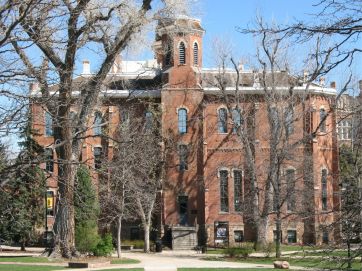CounterCurrent: Week of 02/12/2024
CounterCurrent: China Edition is a monthly newsletter of the National Association of Scholars uncovering and highlighting the effects of the Chinese Communist Party's influence on American education.
All signs show that American education is beginning a long and painful divorce with the People’s Republic of China (PRC). Across the U.S., Chinese scientists in fields ranging from mathematics and physics to biochemistry are fleeing from U.S. universities to return to China’s top campuses. The exodus of Beijing’s top scholars comes amid a renewed interest by the Chinese Communist Party in exerting control over its own institutions of higher education through powerful apparatchiks. On the U.S. side, Republican-led state governments are cracking down within their own jurisdictions to limit academic exchanges between universities and Chinese counterparts. The breakup is afoot; however, to quote the classic Neil Sedaka pop song of 1960, “breaking up is hard to do.”
Tensions in the Pacific are heating up, with little sign of cooling off anytime soon. Last month, Taiwan’s pro-sovereignty party, the Democratic Progressive Party, won an unprecedented third term in power. China’s economy is facing crisis, and a potential major war in the South China Sea remains a possibility.
Amid all of the intrigue and tension, American academia is confronted with Beijing’s efforts to forestall a divorce. Last November while meeting with President Biden in San Francisco, China’s General Secretary, Xi Jinping, announced an initiative to bring 50,000 American students to study in the PRC over the next five years. China has promoted this development as a “people-to-people” exchange, just as it has stated its opposition to U.S. state initiatives to reduce academic ties. At a Chinese embassy gala late last month, China celebrated this initiative as the “YES program” (Young Envoys Scholarship) to lure American students for summer camps and exchange programs.
Unsurprisingly, China’s frantic efforts to heal the crisis of confidence it faces in international academic collaboration is being buffered by a bevy of Western foundations. Among guests at the recent gala were the heads of the Institute for International Education, the U.S. Heartland China Institute, the U.S.-China Education Trust, and the American Association of State Colleges and Universities. Too many American educators fail to see the risk, seeking to forestall divorce, keep China close, and keep the money flowing.
Just as China is showing signs of retreat from American campuses, Taiwan is filling some of the void. Over the past year, a number of institutions representing thousands of educators from the K-12 level to universities have signed agreements that strengthen ties with Taipei in areas ranging from Mandarin language instruction to collaboration in science and technology. Last March, the University of Illinois system penned a memo of understanding (MOU) with National Tsing Hua University to collaborate in biomedicine, materials science, and Chinese language instruction. Indiana’s Purdue University followed suit by sealing agreements with Taiwan’s National Yang Ming Chaio Tung University and National Chengchi University. In November, Texas A&M, the University of Hawaii Manoa, Penn State, and the Oklahoma Department of Education all bolstered ties with Taipei.
All signs show that American academia is not xenophobic; rather, the U.S. education system is slowly breaking up with the People’s Republic of China and building bridges with the Republic of China. The rationales for the shift are clear. The Chinese Communist Party mishandled and lied about Covid-19, which caused the largest pandemic in a century. At the same time that the West is seeking to save Ukraine from a Russian invasion, China is actively supporting Russia’s war effort by bolstering its economy and helping it circumvent sanctions. For American universities wanting to collaborate in science research and experience Chinese culture, Taiwan offers both without the same risks to intellectual property and national security.
Divorce takes time for individuals, with those going to trial lasting an average of over 17 months. For the education systems of the world’s top two economies, divorce will take considerably longer. Among foreign students at American universities, students from the PRC remain the largest group representing any single country. The costs facing Chinese students attending U.S. universities, and complexities of the American legal immigration system are among some of the reasons leading Chinese families to reconsider attending college in America. Geopolitical tensions cannot be ignored, just as a growing number of Western academics see research collaboration with Chinese institutions as an increasingly risky proposition.
According to a survey conducted by Change Research last year, a majority of men stated that a partner’s support for communism was the single greatest red flag for a relationship. Fortunately for American academia, there are plenty of potential partners outside of the PRC’s Forbidden City. Students from India are increasing their attendance at American colleges, just as more American schools sign MOUs with counterparts in the subcontinent. Last year, the University of South Florida finalized a MOU with India’s SRM University. Florida’s new ties with China’s major Asian competitor came hot on the heels of the MOU signed between India’s universities and U.S. counterparts that was brokered by the Association of American Universities last September. In the context Florida’s restrictions on ties with universities in the PRC, the state’s new relationships with India are a simple matter of geopolitical savvy.
Breaking up may be hard to do, but universities in the U.S. and China appear to be moving slowly in that direction. Risks over intellectual property theft, the misuse of fundamental research for dual-use purposes, and other risks to U.S. national security will continue to incentivize both the federal and state governments to pressure a reduction in ties with Beijing. For universities seeking international openness, Taiwan and India await new ties. For U.S. students seeking to take advantage of China’s new YES program, time will tell if they say “yes” to China’s reconciliation attempt.
Photo by Kelly Sikkema on Unsplash













